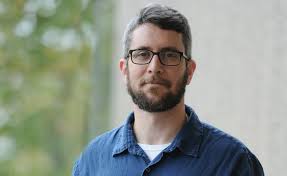
Meet BSF Grantee – Prof. Clifford Brangwynne
2016 BSF Grantee Wins Coveted Fellowships

To put it mildly, Clifford Brangwynne, an associate professor of chemical and biological engineering at Princeton, had quite a year in 2018.
First, he was one of only 19 science investigators throughout the United States to receive funding through the Howard Hughes Medical Institute’s new $200 million initiative for innovative researchers. Then, he was named a 2018 MacArthur Fellow by the John D. and Catherine T. MacArthur Foundation. Though they are officially called fellows, recipients are more commonly known as genius grant winners.
In 2016, Brangwynne and Michael Elbaum of the Weizmann Institute of Science received a BSF grant, and advancements they have achieved since then led to even more recognition last year.
Brangwynne is part of a team of researchers who made discoveries about the formation of cellular components called membraneless organelles and the key role these organelles play in cells. In November, the researchers had two papers published in the journal Cell. The papers deal with intracellular phase separation – the process by which the chaotic liquid matter inside cells transforms into membraneless organelles. The researchers focused on the conditions that lead to the formation of the organelles and the formation’s impact on cellular DNA.
Brangwynne is part of a new cohort of biologists exploring transitions that affect genomes. He said genomes are “like a blueprint for the past, present, and future of physical selves”. Genomes are not only a record of someone’s past (i.e. genetic heritage.) They help determine characteristics such as height and eye color, and they can also predict diseases a person is likely to get.
Organelles play critical roles in human health. The loss of their fluid-like consistency is implicated in diseases including cancer, Alzheimer’s, and amyotrophic lateral sclerosis (ALS). Brangwynne plans to explore phase transitions further and hopes that future discoveries could lead to better understanding and treatment for such illnesses.
He is grateful for grants such as the one from BSF, which came as part of BSF’s Transformative Science program for potentially groundbreaking research.
“BSF has been helpful in bringing Michael (Elbaum) and I together, and in fostering positive interactions that are moving our science forward, particularly in the development of our new Corelet system that was recently published in Cell,” Brangwynne said.
Corelet is a tool developed by the researchers to create a quantitative description of the concentration of proteins driving phase separation in cells. Because protein concentrations help regulate the assembly of membraneless organelles, the description will help researchers investigate the mechanisms that create the organelles at some local regions of the cell, but not in others.
Brangwynne earned a B.S. in materials science and engineering, with a minor in physics, from Carnegie Mellon University; and a Ph.D. in applied physics from Harvard University. He conducted postdoctoral research in Dresden, Germany, at the Max Planck Institute of Molecular Cell Biology and Genetics, and the Max Planck Institute for the Physics of Complex Systems, before joining the Princeton faculty in 2011.
He describes himself as a “curiosity-driven explorer.”
“I view my research — and life in general — as an incredible adventure, and I’m eager to see where it leads,” he said.
